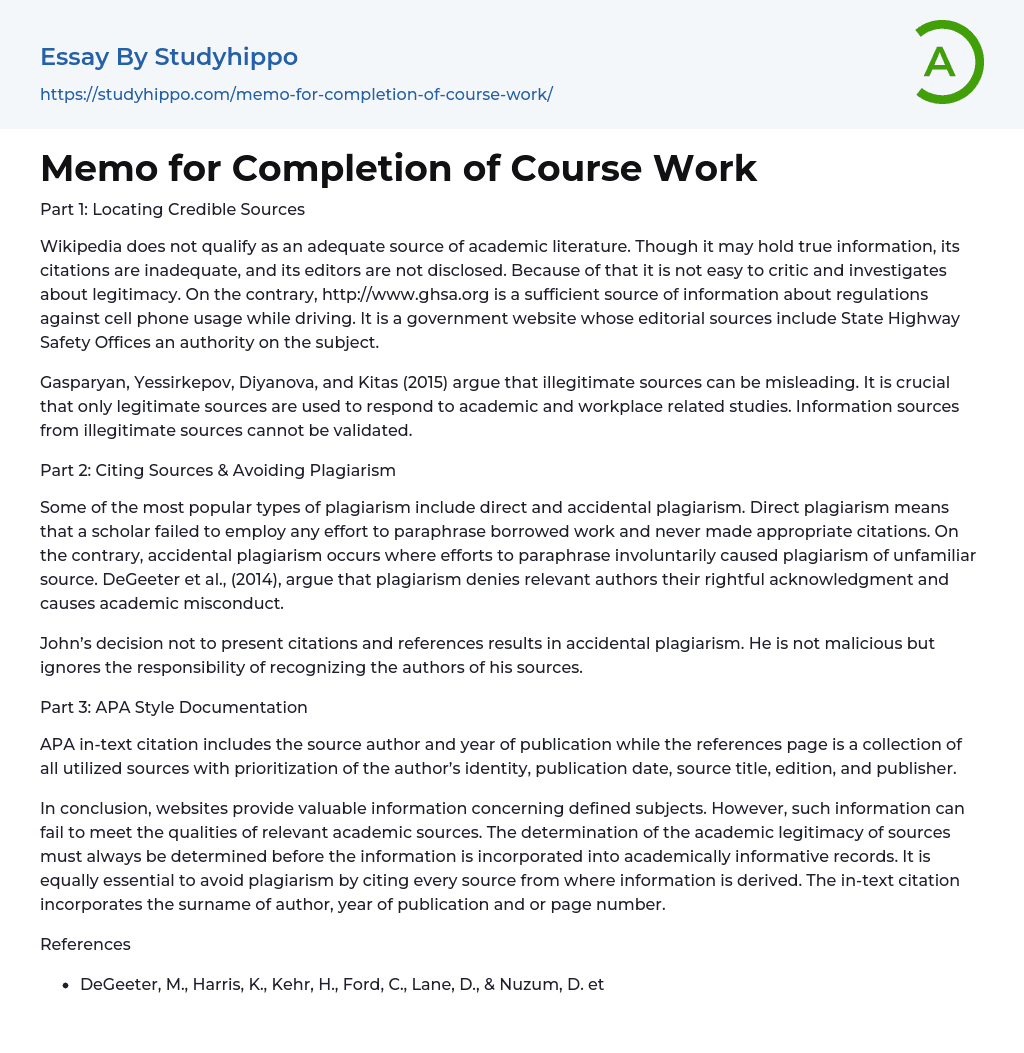Part 1: Locating Credible Sources
Wikipedia cannot be considered a reliable source for academic literature as it lacks adequate citations and its editors remain undisclosed.
It is challenging to criticize and investigate legitimacy. However, http://www.ghsa.org is a reliable source for information on regulations against cell phone usage while driving. This website is a government site that includes editorial sources from State Highway Safety Offices, which are authoritative on the subject. Illegitimate sources can mislead, as argued by Gasparyan, Yessirkepov, Diyanova, and Kitas (2015). Therefore, it is essential to use only legitimate sources for academic and workplace studies.
Information from illegitimate sources cannot be verified.
Part 2: Citing Sources & Avoiding Plagiarism
Direct and accidental plagiarism are common forms of plagiarizing. Direct plagiarism occurs when a scholar does not attempt toborrowed work and does not provide proper citations. Conversely, acc
...idental plagiarism happens when unintentional leads to plagiarizing from an unfamiliar source.
DeGeeter et al., (2014), argue that plagiarism denies relevant authors their rightful acknowledgment and causes academic misconduct. It is John's decision not to present citations and references that leads to accidental plagiarism. Although he is not malicious, he disregards the responsibility of recognizing the authors of his sources.
Part 3: APA Style Documentation
APA in-text citation includes the source author and year of publication, while the references page is a collection of all utilized sources, prioritizing the author's identity, publication date, source title, edition, and publisher. In conclusion, websites provide valuable information regarding defined subjects.
The importance of recognizing that not all information meets the requirements for reliable academic sources should be acknowledged. Consequently, evaluating the academic validity of sources before including them in scholarly
documents is crucial. Additionally, it is vital to prevent plagiarism by correctly citing all sources of information. In-text citations typically consist of the author's last name, publication year, and/or page number.
References
- DeGeeter, M., Harris, K., Kehr, H., Ford, C., Lane, D., ; Nuzum, D. et al. (2014). Pharmacy Students’ Ability to Identify Plagiarism After an Educational Intervention. Am J Pharm Educ, 78(2), 33. http://dx.doi.org/10.5688/ajpe78233
- Gasparyan A., Yessirkepov M., Diyanova S., ; Kitas G.. (2015). Publishing Ethics and Predatory Practices: A Dilemma for All Stakeholders of Science Communication.
The article titled "Journal Of Korean Medical Science" is available in volume 30, issue 8, pages 1010-1016. It can be accessed at the website http://dx.doi.org/10.3346/jkms.2015.30.8.1.
- Automotive essays
- Automotive Industry essays
- Commerce essays
- Construction essays
- E Commerce essays
- Grocery stores essays
- Paper Industry essays
- Pharmaceutical industry essays
- Pharmacy essays
- Polymers essays
- Real Estate essays
- Textile Industry essays
- Analogy essays
- Interpretation essays
- Learning English essays
- Plagiarism essays




